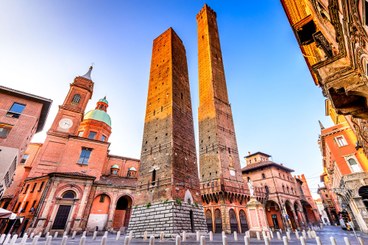
Crossroads of Europe and Italy, Bologna is the main hub of the railway and motorway Italian network and can be easily and comfortably reached from all major cities: 35 minutes from Florence, 1 hour from Milan, 2 from Rome and 1 hour and a half from Venice by train.
The Guglielmo Marconi international airport is served by numerous carriers that connect Bologna with Italian, European and non-European destinations. The airport, just 13km away, is well connected to the center of Bologna thanks to various public and private means of transport.
With its 40 kilometers of arcades that embrace the medieval center of the city you can move to places that cross time, where arts and knowledge meet, where the splendor of the past is the backdrop to a present in which art, music, cinema and dynamism cultural play a primary role.
Here are some reasons to stop and experience Bologna:
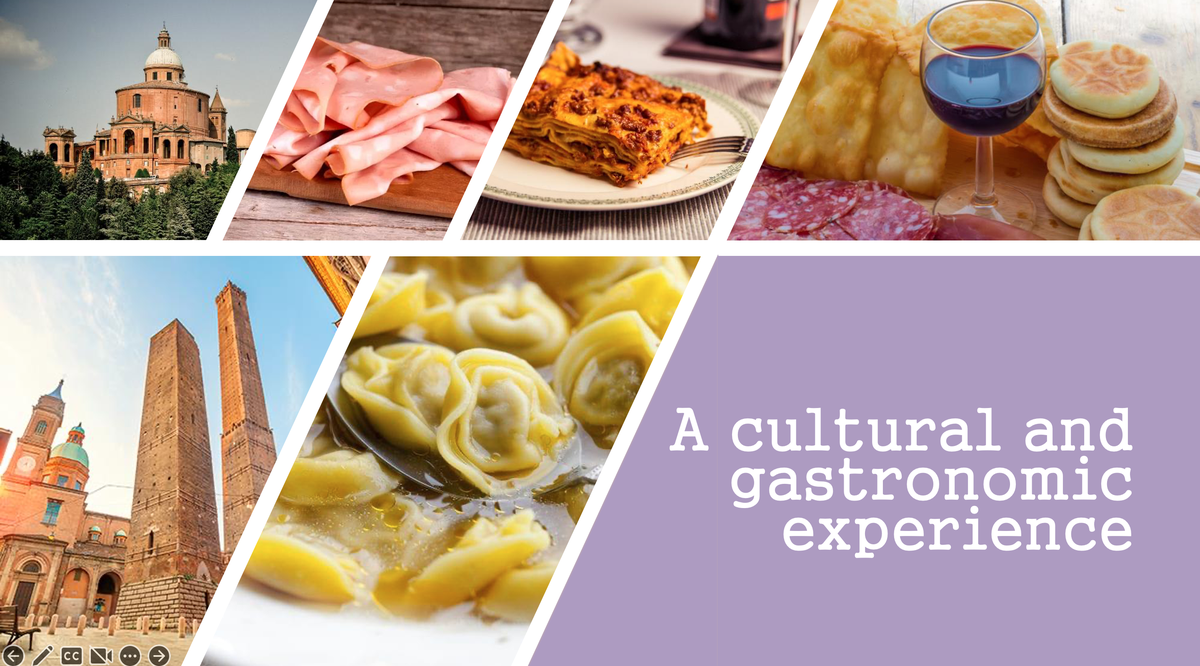

If you were a merchant or a student passing through Bologna in the thirteenth century you would have been struck by the joy that reigned in the city and the great animation of the ancient city taverns. That same joyful and relaxed atmosphere can still be found today by going to restaurants and in the trattoria of the city. Eating well has always been a distinctive feature of Bologna and its inhabitants, thanks to the abundance and genuineness of the products from the thriving surrounding countryside and to the spirit of the Bolognese who love conviviality so much.
Among the specialties, you can find: tortellini, mortadella, tagliatelle with bolognese ragù, crescentine, lasagne and many other.
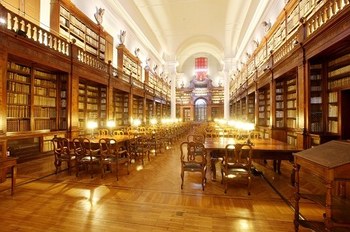
Bologna has a long history of culture, hosting the eldest university of the Western World, founded in 1088. The historical and artistic heritage of Bologna is on display in more than 50 museums, in the many historical and modern libraries of the city, as well as in the famous Cineteca. You will have the opportunity to admire Raphael's Ecstasy of Santa Cecilia at the National Gallery, see one of the most important collections of Egyptian antiquities in Europe at the Archaeological Museum of the city, find yourself face to face with a petrified scream - The Lamentation over the Dead Christ - found under the green dome of Santa Maria della Vita, walk through the history of Bologna at the Museum of History in Bologna, read a rare book in the Archiginnasio Library, stop in the Sala Borsa for a pleasant reading, learn more about the history of cinema at the Renzo Renzi Library located within the famous Cineteca di Bologna.
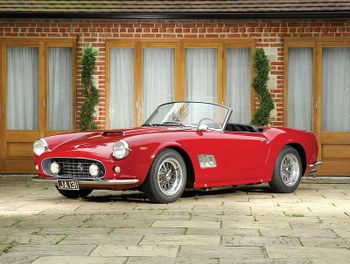
In Bologna, engines have a surname: Ducati, Lamborghini, Maserati. Men with courageous and innovative ideas who have made the history of motors, making Bologna and its symbols famous in the World. Is exactly from the Trident of Neptune that Mario Maserati drew inspiration for the logo of his car manufacturer. Discover the history of the Ducati brothers by entering their museum and complete the visit to the factory, where the legend is born. On the quiet flat roads you will find the roaring roar of the engines. In Sant’Agata Bolognese, art and technology have come together to give life to a myth: that of Ferruccio Lamborghini and the Casa del Toro. Turn on the engine and go beyond the city limits, a little further on you will find the world of the Prancing Horse, the famous Ferrari.
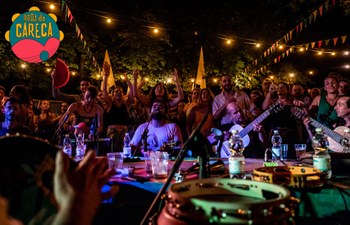
The important classical music season, the jazz and contemporary music program, the songwriters, the rock-bands and the various musicians that animate the city, all this contributes to making Bologna a unique center for music. Between the 17th and 19th centuries, Bologna was a must for the great musicians of Europe. Music has always played a central role in Bologna and institutions such as the G.B. Martini, the Museum and International Music Library and the eighteenth-century Municipal Theater which testify to the extraordinary musical history.
Such a vast and deep-rooted activity prompted UNESCO in 2006 to declare Bologna "Creative City of Music". Today Bologna hosts a lively and international music atmosphere, where you will also be able to immerge yourself in the rythms and sounds directly brought from Brazilian culture.